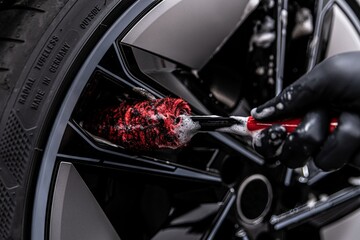Backlinking is a key component of search engine optimization (SEO). It involves placing a hyperlink on a page to another website or webpage. This is important because it helps search engines determine the relevance and authority of a webpage.

The quality of backlinks also matters. It is better to have a few high-quality links from reputable sources than dozens of low-quality ones. Contact Rank Boss for professional help.
Link building is a crucial aspect of search engine optimization. It involves obtaining one-way links from reputable websites that are relevant to your niche. This helps increase your domain authority and improves your search engine rankings. In addition, link building is an important aspect of content marketing, which involves creating and promoting high-quality content that attracts more visitors.
While some people believe that link building is dead, it is still a vital part of SEO and should be included in your overall strategy. However, it is important to remember that quality is more important than quantity. Many SEO agencies will focus on the number of links, but you should always consider the quality of those links as well.
Some methods of link building are more effective than others, and it is important to use only ethical practices. These include using the correct keywords and avoiding spammy links. Other techniques include writing guest posts, creating relevant content, and leveraging social media platforms to promote your website. The best way to ensure that your link building efforts are successful is to hire an experienced and reliable SEO company.
The first step in building a strong backlink profile is to identify the types of sites that are most likely to be interested in your content. To do this, you can use a tool like Ahrefs to evaluate a website’s domain authority (DA) and see whether it is a good fit for your website. It is also important to pay attention to the guidelines for the site you are contacting, as some may be strict about what kinds of content they accept.
For example, some blogs only accept articles about specific topics, such as home renovations or fashion. Choosing the right topic will increase your chances of getting linked to those blogs, which will boost your visibility and help you achieve higher search engine rankings.
Another technique is to find broken links on other websites and reach out to the website owners, suggesting your content as a replacement. This method has been used for years and continues to be a popular way to build links. However, it is important to note that the content must be relevant and useful to the reader in order to get a high-quality link.
Anchor text
Anchor text is the clickable part of a link. It is a critical element of backlinking and SEO, as it helps search engines understand the context and content of a linked page. Using the right keywords and phrases in your anchor text is important to maximize its effectiveness. However, it is also important to avoid overusing keywords. Otherwise, you risk being penalized by Google.
A natural anchor text is a word or phrase that is relevant to the page it links to. It should be descriptive, free of keyword stuffing, and make it clear what the link is about. In addition, it should fit seamlessly into the surrounding text. This will help the reader navigate and provide a better user experience.
The most important thing to remember when creating an anchor text is that it must be relevant to the page you’re linking to. For example, if you’re linking to a page about content marketing, you should use an anchor text like “How to Write Effective Copy” or “Content Marketing Strategies.” This will help search engines understand the relevance of your link and improve your ranking.
Having a diverse anchor text profile is one of the most effective ways to boost your rank in Google. The more diversity you have, the higher your ranking will be. However, it’s not possible to have an entirely diverse anchor text profile, as Google’s algorithm looks at many factors in deciding your rank.
Another way to get a better rank is to have a strong domain authority. Domain authority is an important metric that influences search engine results and is determined by the number of quality links to your website. In order to build a stronger link profile, you should focus on getting high-quality backlinks from authoritative websites in your industry.
The best way to do this is to collect your internal and external links in a tool like Rank Tracker. After that, you can analyze the backlinks to determine which ones are working for your site. You can then use this information to improve your link building strategy. Moreover, you should always prioritize quality over quantity. This is because backlinks from low-quality websites can hold you back from the top of Google’s search results.
Relevance
Relevance is a key element of backlinking, as it signals to search engines that your content is relevant and enhances the user experience. It also indicates that other websites trust your content, a signal that is important for SEO. Relevance is a combination of many different factors, including keyword frequency, referring domains, and page authority. However, it is important to note that not all backlinks are created equal. Some are more relevant than others, and it is important to build a strong, diverse link profile.
A good place to start is with a backlink audit. Use tools like Ahrefs and Moz to compare your backlinks and analyze their quality. You can also get a free overview of your backlinks by using Google Search Console. These tools offer basic data on the number of linking sites, their domains, and the anchor text used in their links. Ideally, you should look for tools that offer detailed data on the quality of backlinks.
The best way to improve your relevance is to acquire relevant backlinks from reputable websites in your industry. This will help you build a robust link profile that is safe from penalties. It is also a good idea to diversify your backlink sources, which will prevent over-optimization and protect you from algorithmic updates.
Creating relevant backlinks can be difficult, especially for museums with limited resources and time. However, there are ways to make the process easier and increase your chances of obtaining valuable links. Start by identifying the websites that are most likely to link to your content. Typically, resource pages that compile links on a particular topic are highly relevant and can boost your SEO. If you find a resource page that is related to your topic, try to contact the webmaster and ask them to include your content.
Backlink relevance is a factor that influences a website’s search engine ranking, as it shows the closeness of the referring and referred domains. There are four main degrees of backlink relevance: no relevance (unrelated sites), sentence-wide relevance (contextually relevant within specific content), article-wide relevance (the topics of the articles containing the links match), and site-wide relevance (domains reasonably match topically). In addition, proximity to your business’s geographical location is an additional relevance factor that carries immense weight in local SEO.
Authority
If you’re a business that relies on backlinking to improve SEO, it’s important to keep track of your competitors. Luckily, there are several tools that let you see the exact tactics your competition is using. By doing so, you can identify the methods that work best and incorporate them into your own backlinking strategy. Some of these tools allow you to check a competitor’s entire link profile and analyze the performance of individual links.
One of the most important aspects of a backlink is its authority. A link with high domain authority (DA) is more valuable than a similar link from a low-DA website. DA is a measure of how well a website ranks on search engine results pages (SERPs). A higher DA means that the site is more trustworthy and influential, and will pass more authority to your own site through a backlink.
The other main factor of a backlink’s value is relevance. You want to ensure that your links are contextually relevant to the topic of your article or blog post. This will help you get more traffic from your backlinks and increase your SEO performance. To evaluate the relevancy of a backlink, look for the anchor text and the context in which it is placed. For example, a link in a fitness blog is more relevant than a link in a travel magazine.
It’s also important to keep in mind that a backlink from a disreputable website can negatively impact your SEO rankings. You can use SEMRush to check the toxicity score of the linking website. A high toxicity score indicates that the site may be involved in spammy practices. If you find a disreputable backlink, make sure to ask the site owner to remove it.
In addition to checking the toxicity score of a linking website, you should also examine the site’s reputation and domain age. The older a domain is, the more trustworthy it is. Also, avoid links from websites that prioritize advertising over content. These sites can send spam signals to search engines and damage your SEO ranking.
